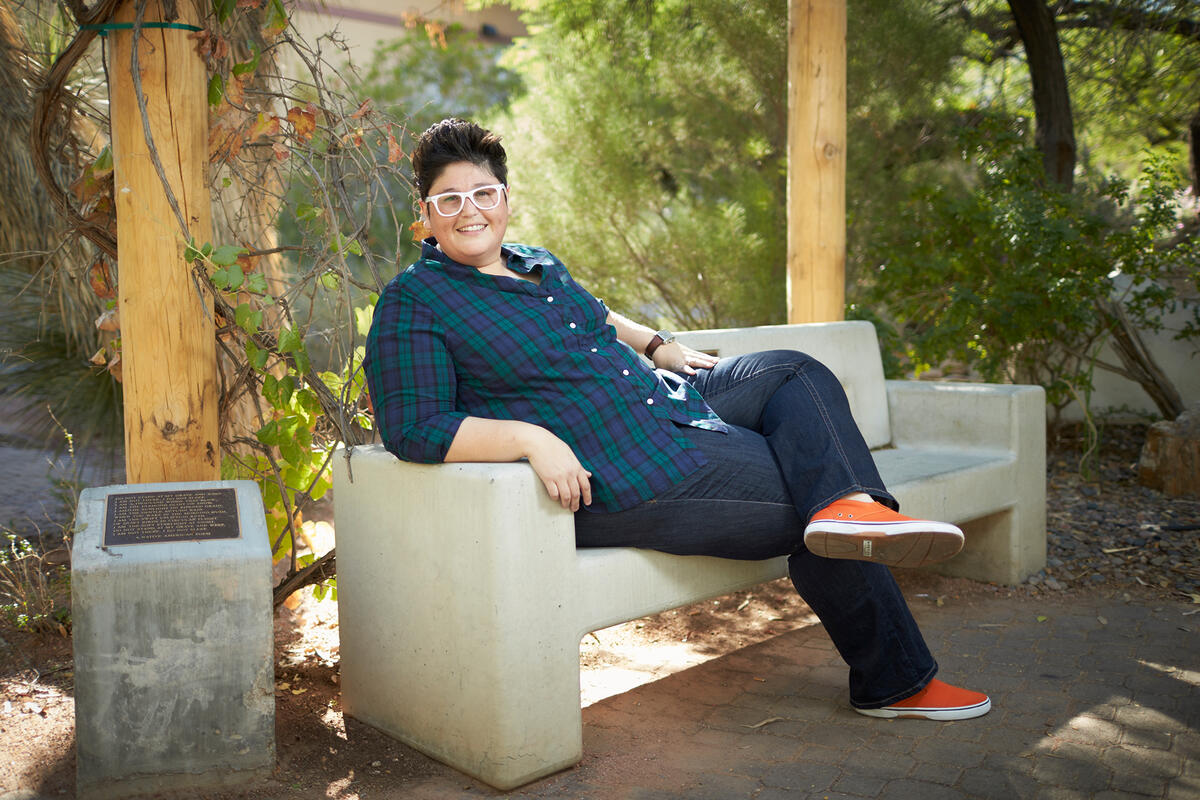If you’ve never heard of intersex, you aren’t alone.
A few weeks ago a colleague and I were at a popular Las Vegas bar attending a drag show fundraiser for a local nonprofit gender and sexual rights organization. In between drag show performances, the host, who introduced herself as a “drag queen,” kept encouraging the 35 or so people in attendance to purchase more raffle tickets to raise money for Nevada’s gender variant community.
My colleague asked the host, “What about intersex people?” The host quickly responded in the microphone she was holding, “Intersex? What’s that? International sex?” The audience erupted in laughter.
The irony was not lost on me. Of all places, you would think there'd be greater awareness about intersex in that particular crowd.
I have complete androgen insensitive syndrome, meaning I was born with an outward female appearance, but I have XY chromosomes. I had internal testes before doctors removed them, without telling me, when I was a teenager. My research is centered on how intersex is experienced in contemporary U.S. society, including when dealing with the medical community.

As I discuss in my new book Contesting Intersex: The Dubious Diagnosis (NYU Press, 2015), doctors routinely subject intersex people to physically and emotionally harmful genital surgeries. These surgeries are almost always cosmetic and rarely medically necessary.
Perhaps even worse, many intersex people aren’t told the truth about their diagnosis, or if they are, they are told they are rare and would likely never meet another intersex person.
As both an intersex scholar and person, here are five things I wish everyone knew:
5. We do exist.
Although there are no reliable estimates of the presence of intersex in the population, a widely cited statistic suggests about 1 in 2,000 people are intersex — or about 1,000 people in a city our size. Many doctors use their scalpels to surgically force us into invisibility, often making us feel ashamed about being different. However, when we find out the truth about our bodies and what we endured, we don’t hide. We search the internet for information and usually end up connecting with one another through support groups such as the AIS-DSD Support Group (a nonprofit for people with differences of sex development whose mission is to make sure no one is forced to face their diagnosis alone), or any other number of intersex organizations that exist around the world, including Organisation Intersex International.
4. We are normal.
Regardless of intersex status, all male bodies and all female bodies do not look the same. Penises aren’t carbon copies of one another, nor are vaginas. It turns out there is a whole lot of variation in what makes up your reproductive system. Instead of shaming bodily differences, whatever those may be, my hope is that we embrace The Interface Project’s slogan that “No Body is Shameful.”
3. We are fighters.
For over 20 years intersex people from around the world have been organizing to end the medical treatment of intersex. Intersex people speak at medical education events and public protests, regularly appear in the media, address the United Nations, and even work with the World Health Organization. We are also looking to the law to, for once and for all, put an end to the medically unnecessary surgeries intersex babies and children are forced to endure in the United States. You can read more about an ongoing historic lawsuit, filed in 2013 and known on twitter as #Justice4MC, at Advocates for Informed Choice.
2. Our youth inspire.
Intersex people have many accomplishments to be proud of — just look back at how much more connected intersex people are today than we were in the early 1990s, when the intersex rights movement was formed — but our intersex youth and youth leaders are arguably the most inspiring. They speak up in their classrooms, they march in parades, and they even made a BuzzFeed video that was watched more that 1.7 million times. Our youth are honorable and determined activists.
1. These issues affect you.
Doctors continue to perform surgery on intersex bodies to squeeze us into an arbitrary male or female box — one that is narrowly and problematically correlated with gender and sexual stereotypes. These stereotypes force everyone into rigid categories, regardless of the shape or features of their genitalia. If you have a penis, you are expected to use it to penetrate a vagina if you want to be a “real” man. If you have a vagina, you are expected to desire and enjoy vaginal penetration if you want to be a “real” woman. However, it would behoove all of us to escape these constraints of binary thinking that underline sex, gender, and sexuality. Genitalia are naturally variable and are not predictive of our gender or sexual identities, which are complex and fluid parts of who we are. There are many ways to accomplish your gender and sexual identities both with and without your genitals.
Intersex people are here to stay and will always be around fighting for intersex rights. But we could use your help in raising awareness and debunking myths about our lives. My hope is that I can count on you to stand by our sides.



